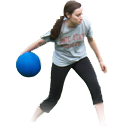
What to do if Lunges Hurt Your Knees
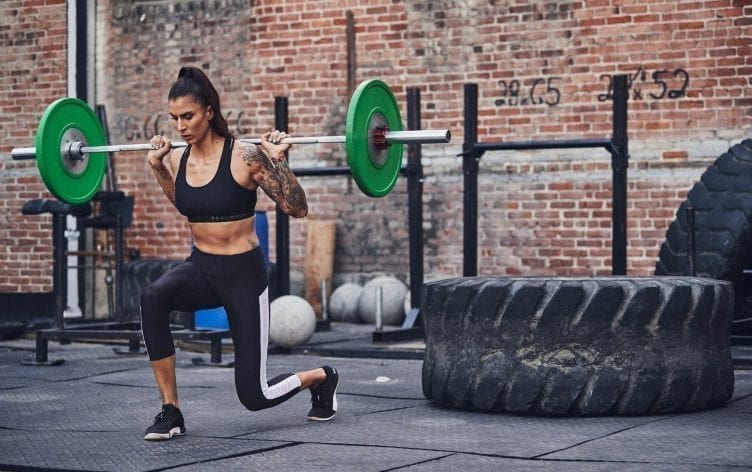
Many of us have a love-hate relationship with lunges. But if you can’t lunge without feeling a twinge in your knees, it’s likely a hate-hate relationship.
It’s not uncommon to feel knee discomfort or pain during lunges. The worst offenders tend to be forward lunges, walking lunges and jump lunges, says Dani Almeyda, corrective exercise specialist and co-owner of North Carolina-based Original Strength Institute. “Or at least that’s what I mostly see at our facility.”
If you’re bothered by knee discomfort or pain when you lunge, start your journey to relief by identifying the root cause. After all, lunges are a great exercise for strengthening and building stability in the legs and glutes, and worth including in any well-rounded strength program. Don’t exclude them if you don’t have to.
There are a couple of primary reasons lunges might bother your knees — aside from joint, tendon and ligament injuries, of course. See if one or both of these reasons apply to you.
1 POOR FORM
If you feel knee discomfort or pain when you do lunges, check your form in the mirror. Notice where your front knee ends when you perform a lunge: Is it over your front toes? If not, your stance may be too narrow. If you don’t leave enough space between your front and back foot, your front knee will likely travel past your toes, which places extra pressure on the joint, says Eliza Nelson, ACE-certified personal trainer and orthopedic exercise specialist.
The fix: Widen your stance and see if that makes a difference. Check again to see if your front knee is over your toes.
2 WEAK GLUTES
While you’re checking your form, see if your front knee collapses inward when you lunge. You may need to ask a friend or trainer to watch you or you can take a video to self-assess. If you find your front knee is collapsing inward, you may have a glute strength problem. Your glutes — the gluteus maximus in particular — work to push your hips forward and outwardly rotate the leg. Why does this matter for your knees during lunges? “If the glute isn’t helping properly in the lunge, the upper leg and knee will collapse inward, and the knee won’t be allowed to track properly over the middle of the front foot, like we want,” Nelson explains.
The fix: Strengthen your glutes with exercises like glute bridges, sit-to-stands, clam shells and banded lateral walks. And be sure to stretch your glutes after you’re done with your strength routine. The standing or lying figure-four stretch and pigeon pose are two great options to start with, Nelson says.
You may also want to perform isolation exercises to strengthen your legs without stressing the knees. You could try light leg extensions, hamstring curls and light deadlifts, Nelson says.
GLUTE BRIDGE
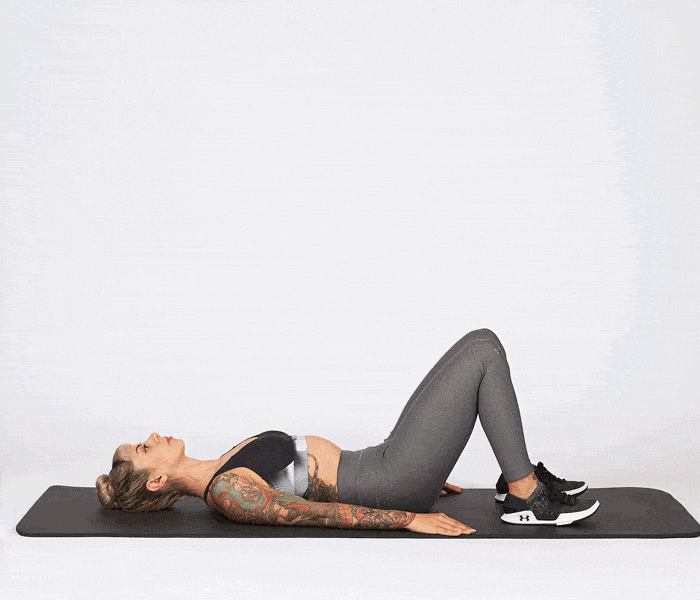
The move: Lie on your back with your knees bent, feet hip-width apart on the floor. Push into the floor with your heels, contract your glutes, and lift your hips off the floor. Squeeze your glutes at the top of the movement, then lower your hips back down to the floor with control. To up-level, add a leg extension at the top of the bridge.
SIT-TO-STAND
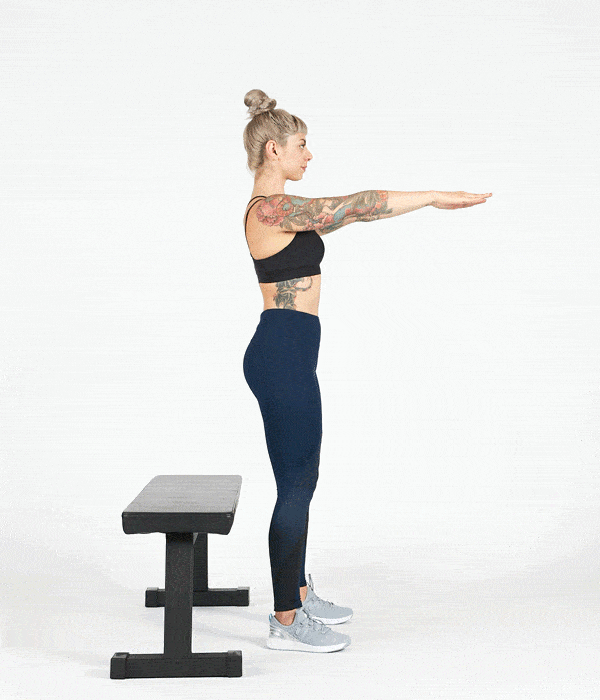
The move: Stand with your back to a chair or exercise bench, your feet hip-width apart. Shift your weight into your heels, sit back into your hips and bend your knees to sit gently into the chair or bench. Push into your heels to return to standing.
CLAM SHELL
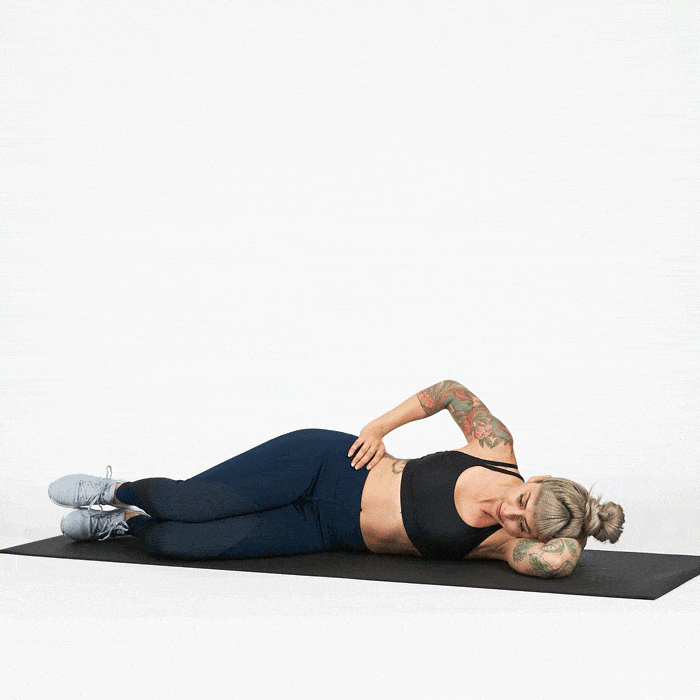
The move: Lie on your side with your knees bent and hips stacked. Keeping your heels glued together, lift your top knee as far as comfortable without letting yourself tilt back. Squeeze your side glute at the top, then lower your knee back down.
BANDED LATERAL WALK

The move: Loop a resistance band around your legs just above the knees and stand with your feet hip-width apart. You should feel mild to moderate tension in the resistance band. Bend your knees slightly and step one foot out to the side. Follow with the opposite foot so your legs are once again hip-width apart. Keep your trunk level as you side-step to avoid rocking motions.
WHAT TO DO IF LUNGES STILL HURT
If you still can’t do lunges without knee discomfort or pain, there are a few other strategies you can try.
For example, if your exercise form is solid, slow the tempo and don’t lunge as far down. “See how that feels,” Almeyda says.
You can also experiment with different styles of lunges to determine if one feels better than another. Some lunge variations, like jump lunges and curtsy lunges, may be too advanced for where you’re at right now. “Choose a [lunge] variation that is comfortable to you and don’t feel pressure to enter into more advanced forms that require more stability, balance or range of motion that is beyond what you can perform without pain or discomfort,” Nelson says.
The static lunge is a great lunge variation to start with. With this variation, you start and finish the movement with your feet in the same position. “You remove the variability and some of the stability that is needed from other lunges,” Nelson explains.
STATIC LUNGE
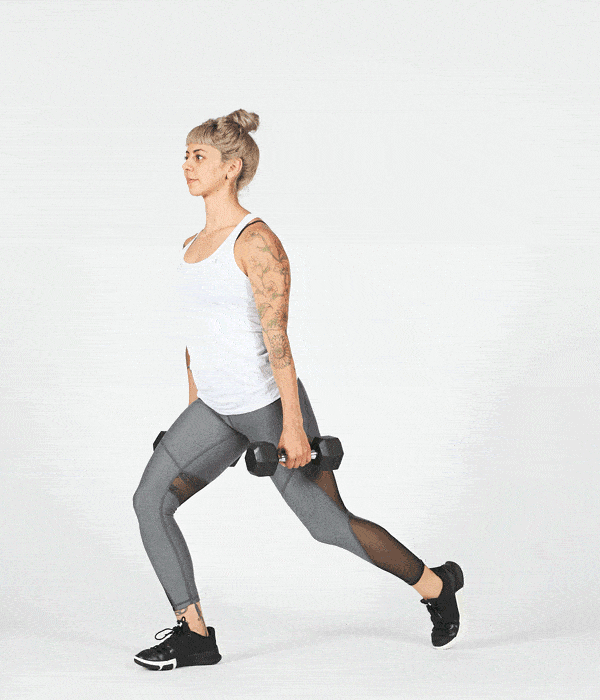
The move: Stand with feet hip-width apart. Take a big step back with one foot and lower your back knee down toward the floor to create a 90 degree angle. Your front knee will also create a 90 degree angle. Shift your weight onto your front foot, first making sure your front knee is in line with your front ankle. Then, drive through the heel of the front foot and engage the glutes to push yourself back up to standing until both legs are extended. Without moving your feet, bend your front knee to start your next rep. Keep your shoulders down and back throughout the movement. Do all reps on one side before switching to the other.
If your knee discomfort still doesn’t improve, or you experience sharp, acute knee pain during exercise (not just lunges), check with your doctor or physical therapist to see if there are other issues at play.
The Arena District Athletic Club is more than just a gym, it’s a premier fitness facility located in the heart of the Arena District in downtown Columbus. We provide convenience and quality, featuring top-of-the-line equipment, top-notch personal trainers, spa-like locker rooms and a wide variety of free group fitness classes daily including Cardio, Spinning, Barre Fusion, Yoga, Boot Camp and more. We offer free 2-hour parking and convenient contract-free memberships, to fit your healthy lifestyle needs. Don’t just join, belong.

